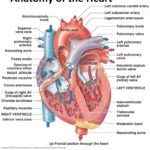Human Heart: Diagram and Anatomy of the Heart Internal Anatomy of the Heart The human heart is a muscular organ that pumps blood throughout the body. It is located in the center of the chest and is about the size of a fist. The heart is divided into four chambers: two atria and two ventricles. The atria receive blood from the body and the veins, and the ventricles pump … [Read more...] about Human Heart: Diagram and Anatomy of the Heart
Carb Counting for Diabetes Made Easy Cheat Sheet
A Beginner's Guide/Cheat Sheet to Carbohydrate Counting Use carbohydrate counting to help keep your blood glucose levels in your target range. Carbohydrate Counting & Diabetes For people with diabetes, counting carbohydrates is essential to blood sugar control … [Read more...] about Carb Counting for Diabetes Made Easy Cheat Sheet
Researchers Found a Way to Convert Donor Blood Into a Universal Type
In July last year, the American Red Cross declared an emergency blood shortage - it simply wasn't receiving enough donations to help all the patients that needed blood. Now, researchers from the University of British Columbia may have found a way to address the problem, even if people aren't donating more: convert a less-usable blood type into one that anyone can … [Read more...] about Researchers Found a Way to Convert Donor Blood Into a Universal Type
How To Remove Mehndi Stain From Clothes
How Do Medical Professionals Stay Awake During Long Shifts?
What happens in the hospital stays in the hospital. Mostly because these healthcare providers were too tired to remember any of it. Day-old coffee, Cheetos, Sour Punch Straws… it sounds like the diet of a gamer who hasn't stepped away from their console for days, but it turns out junk food is practically a dietary staple for many medical residents—yes, the future MDs who … [Read more...] about How Do Medical Professionals Stay Awake During Long Shifts?




